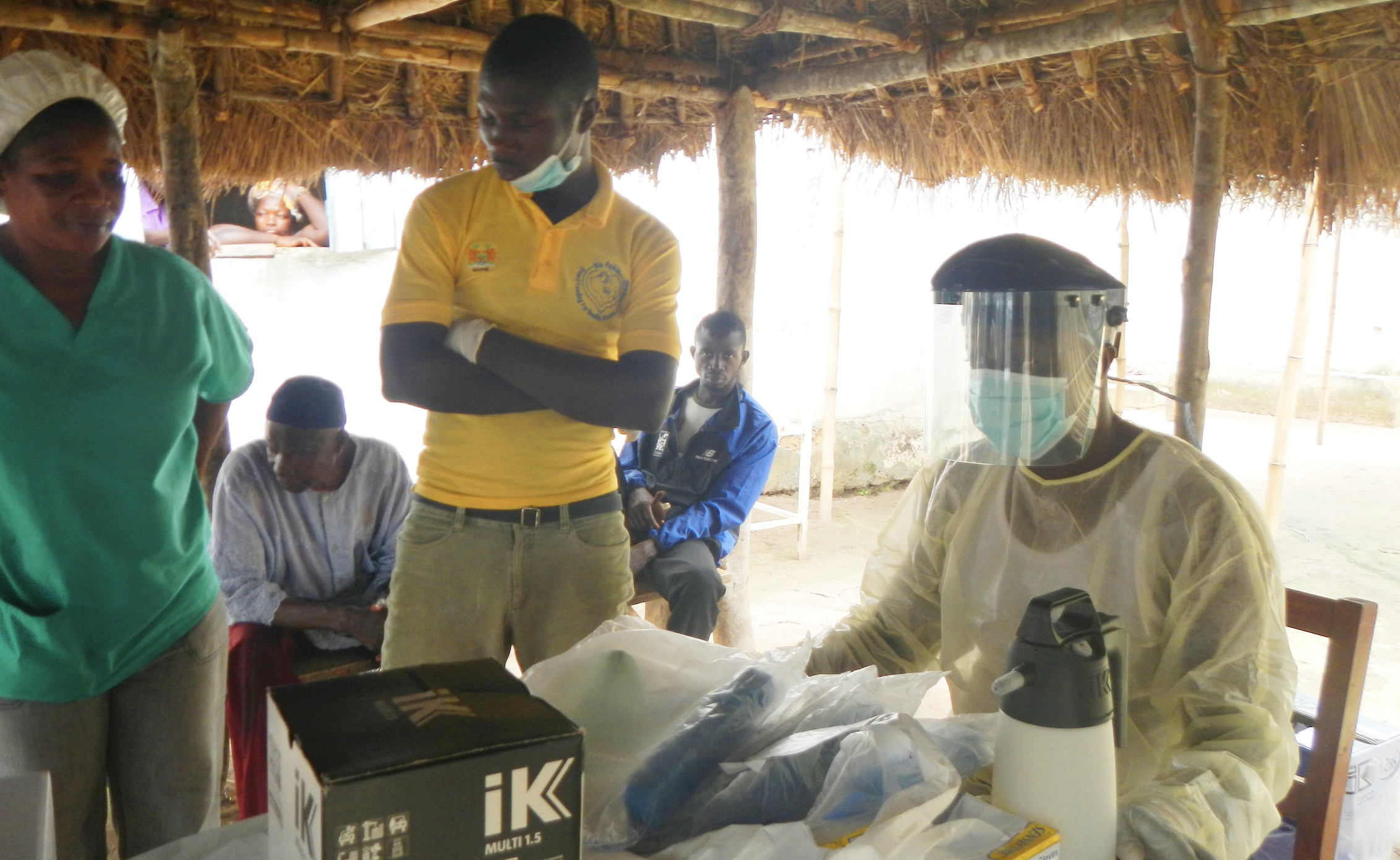ASTMH Annual Meeting 2025
blogWhere the Wellies Hit the Road: The Efficacy and Safety of Personal Protective Equipment
By: Kristen Zozulin, Md Candidate 2020, Frank H. Netter Md School of Medicine at Quinnipiac University

In an Ebola outbreak, healthcare workers are 21 to 32 times more likely to become infected than those in the general population. In early outbreaks, a thin surgical gown and mask was all that separated a clinician from the exposure that could lead to their agonizing death.
While personal protective equipment (PPE) has become much more elaborate since the disastrous Ebola outbreak in West Africa, there is scant data on the efficacy of PPE to prevent disease transmission and a wide-range of equipment, protocols for donning and removal, and assembly of PPE across facilities. On Saturday morning at TropMed19, experts from the WHO, Médecins Sans Frontières (MSF), the Sierra Leone Armed Forces, and research and industry came together for a discussion on the current practices and future directions of PPE.
For Dr. Mohammad Boie Jalloh of the Sierra Leone Armed Forces, the PPE has become too cumbersome, presenting a barrier to his ability to provide the best care for patients.
“I always think of myself, not as a physician, but as a would-be patient,” Jalloh said, “For many on the panel here and other international health care workers, you will be evacuated to Europe or America if you get sick, but, for me, I know I will receive treatment in my own country. And so, I try to think of what I would prefer as a patient.”
He proposes a simpler ensemble, with fewer components, faster to put on and more suited to the stifling hot climate of Ebola-endemic regions.
Dr. Samantha Hall, a health and safety executive at Health and Safety Laboratory in the UK, has observed the logistical issues of PPE in her research. She works with healthcare workers to test the efficacy of PPE using mock scenarios involving various projections of bodily fluids marked with fluorescent dye. Volunteers are often horrified when they see splotches of glowing red and blue on the skin of their neck and upper legs after the PPE is removed.
But clinicians are no longer encountering an untreatable virus without a vaccine, noted Dr. Armand Sprecher, a physician at MSF who specialises in hemorrhagic fevers. He says that’s an important consideration, for him, in the balance between comfort and protection. Furthermore, PPE’s can’t address all scenarios, he said. When health workers fall ill, often the exposure occurred while treating family and friends in the community or moonlighting at other facilities.
Kristen Zozulin is a 2019 ASTMH Benjamin H. Kean Travel Fellow in Tropical Medicine. She is currently a fourth year medical student at Quinnipiac University.
Related Posts
By: Matthew Davis, Burness